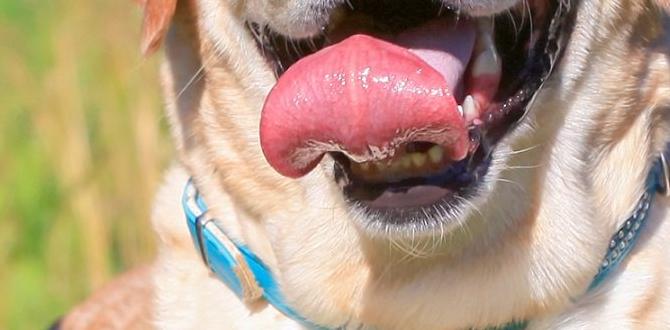Jack Russell Terriers are one of the most beloved breeds of dogs worldwide. These dogs are popular for their energy, agility, and intelligence, making them ideal for various tasks, from hunting to companionship.
However, one physical trait that sets them apart from other breeds is their ears. While some Jack Russells have floppy ears, others have their ears standing up, which raises the question, why do some Jack Russells’ ears stand up? Understanding the reason behind this unique trait is crucial for any dog owner, especially if they want to care for their pet’s health and well-being.
Here, we will explore why some Jack Russells ears stand up and what makes them unique. We will delve into the genetics of the Jack Russell breed and the factors that influence their ear shape and size. Additionally, we will discuss how to take care of your Jack Russell’s ears and prevent any ear-related issues that may arise.

Brief Overview Of Jack Russell Breed Characteristics

The Jack Russell Terrier breed is popular for its lively, energetic, and fearless nature. They are small, typically weighing 13-17 pounds and standing 10-15 inches tall. They have a short, smooth coat that comes in white with black, tan, or brown markings.
Jack Russells are highly intelligent and require plenty of exercise and mental stimulation to prevent destructive behavior. They have a strong prey drive and were originally bred to hunt small game. They are loyal and affectionate towards their owners but can be wary of strangers and other dogs. Jack Russells are not recommended for inexperienced dog owners.
Explanation Of The Importance Of Ears In Dogs

Jack Russell Terriers are a small breed of dog that originated in England. Like all dogs, their ears are important to their health and well-being. Ears help dogs to hear and pick up on important sounds in their environment, such as approaching predators or calls from their owners.
In addition, ears help to regulate a dog’s body temperature by allowing heat to escape. The shape and size of a dog’s ears can also indicate its breed and health. For example, floppy ears are more prone to developing ear infections, while upright ears are less susceptible. Dog owners must regularly clean and examine their pet’s ears to ensure they are healthy and free of any issues.
Anatomy Of Jack Russell Ears

People like Jack Russell Terriers for their distinctive v-shaped ears that fold forward. The dog’s head has small ears set high on it. The outer part of the ear is covered in short, coarse hair, while the inner part is smooth. The ear canal is also relatively short and straight, making the breed prone to ear infections. To prevent this, it is important to keep the ears clean and dry and to check for signs of infection or irritation regularly.
Description Of Typical Ear Shape And Size
The typical ear shape of a Jack Russell is triangular and pointed, with a size that is in proportion to the head. The head usually sets the ears high and carries them erect or slightly forward.
The size can vary slightly depending on the individual dog, but they are generally small to medium-sized dogs with ears that are not too large or heavy. The shape and size of their ears help to give them their characteristic alert and attentive expression.
In size and shape, ears can vary greatly from person to person. However, the average ear length for an adult male is 2.5 inches (6.3 cm) and for an adult female is 2.2 inches (5.6 cm). Ears also tend to be wider than they are tall, with an average width of 1.5 inches (3.8 cm) and an average height of 1.1 inches
Discussion Of Ear Muscles And Cartilage
The discussion about ear muscles and cartilage in Jack Russell terriers may pertain to their ability to control their ear movements. These dogs can tilt and rotate their ears in different directions because of their strong ear muscles and flexible cartilage.
Some breeders and owners may find this trait desirable for show purposes, while others may appreciate it simply as a quirk of the breed. However, it is important to note that excessive ear manipulation or breeding for extreme ear positions can potentially lead to ear infections and other health issues. Therefore, responsible breeding and proper ear care are crucial for the health and well-being of these dogs.
Why Do Some Jack Russells Ears Stand Up 4 Interesting Reasons

Jack Russells ears Terriers are a breed of dog popular for their small stature and high energy levels. One unique feature of this breed is their ears, which can either stand up or fold over. Some Jack Russell Terriers have ears that stand up, which is desirable for many owners and breeders.
The standing ear indicates good breeding and can help the dog stand out in competitions. Your furball will undergo many changes during the 3 1/2 to 7 months of age. Their ear set will do all sorts of wacky things, like standing up straight, flopping over to the side, or just being downright stubborn and doing their own thing.
Don’t worry, though. This is all part of the teething process and will eventually pass. However, it is important to note that not all Jack Russell Terriers have ears that stand up, which does not affect their overall health or temperament. Ultimately, the decision to breed for standing ears should be carefully considered and in accordance with ethical breeding practices.
Genetics And Hereditary Factors
Jack Russell Terriers are a breed popular to have certain genetic and hereditary factors. These factors can play a role in their overall health and behavior. Some common genetic conditions that Jack Russells may be prone to include deafness, eye problems such as cataracts, hip dysplasia, and skin allergies.
Additionally, the breed may be predisposed to certain behavioral issues such as aggression, separation anxiety, and hyperactivity. It is important for potential owners to research the breed thoroughly and work with a reputable breeder who conducts health screenings and genetic testing to minimize the risk of these issues. Regular veterinary check-ups and proper nutrition and exercise can also help to maintain the health and well-being of Jack Russell Terriers.
Age And Growth Stages
Jack Russell Terriers typically live for 13-16 years. During their first year of life, they will experience significant growth and development, both physically and mentally. They will typically reach their full height and weight by around 12 months old and continue to develop muscles and strength until they are around 2 years old.
As they enter their senior years, they may experience age-related health issues such as arthritis, vision and hearing loss, and dental problems. Providing them with a balanced diet and regular exercise is important to promote their overall health and well-being.
Health And Hygiene

they can be prone to certain health issues, such as hip dysplasia, luxating patella, deafness, and eye problems. To maintain good health and hygiene for your Jack Russell, it is important to provide them with regular exercise, a balanced diet, and routine veterinary check-ups. Regular grooming is also important to keep their coat clean and healthy and prevent skin issues.
Regarding hygiene, it is important to keep your Jack Russell’s living space clean and free of debris and regularly clean their bedding and toys. Regularly brushing their teeth and trimming their nails can also help maintain their overall hygiene and prevent dental issues.
Training And Handling
Jack Russell Terriers are energetic and intelligent dogs that require proper training and handling to thrive. They are known for being highly independent and stubborn, making early and consistent training essential.
Positive reinforcement techniques such as treats, praise, and playtime effectively train Jack Russells, as they respond well to rewards for good behavior. Consistent rules and boundaries are also important, as these dogs can become dominant if they sense a lack of leadership.
Regarding handling, it’s important to provide plenty of exercise and mental stimulation for Jack Russells, as they have a lot of energy to burn. Socializing with other dogs and people is crucial to preventing aggression and anxiety. Jack Russells can make loving and loyal companions with proper training and handling.
Reasons Why Some Jack Russells Have Ears That Stand Up
The ears of Jack Russell Terriers can either be floppy or stand up, and the reason for this lies in the breed’s genetics. The allele for floppy ears is dominant, so most Jack Russells have floppy ears.
However, some Jack Russells carry the recessive allele for erect ears, which means they will have ears that stand up. This trait is more common in certain lines of Jack Russell’s and can also be influenced by environmental factors such as diet and physical activity.
Natural Ear Position Due To Genetics And Breed Standards
Both genetics and breed standards determine the natural ear position of Jack Russell Terriers. According to breed standards, the Jack Russell Terrier’s ears should be small, V-shaped, and drop forward, close to the cheeks. However, the natural ear position can vary depending on the dog’s genetics.
Some individuals may have ears that naturally stand erect or flop to the side. It is important to note that natural ear position does not affect the dog’s health or temperament and should not be a factor in selecting a Jack Russell Terrier.
Training To Have Ears Up For Show Or Hunting Purposes
Training a Jack Russell to have ears up for show or hunting is not recommended. It goes against their ears’ natural shape and structure and can cause discomfort or health issues. Additionally, having erect ears does not affect their hunting or show abilities.
It is best to allow their ears to fall into their natural position naturally. If you have any concerns or questions regarding your Jack Russell’s ear health or training, it is recommended to consult a veterinarian or professional dog trainer.
Medical Conditions Or Injuries That Affect Ear Position
Medical conditions or injuries that affect ear position are a diverse range of conditions that can alter the physical appearance and functionality of the ears. One of the most common causes of altered ear position is a condition known as microtia, in which the ear is underdeveloped or missing entirely.
Other medical conditions such as hemifacial microsomia, Treacher-Collins syndrome, and Goldenhar syndrome may also affect ear position. Medical conditions or injuries that affect ear position in Jack Russell Terriers include:
- Ear infections: Chronic ear infections can lead to inflammation, pain, and damage to the ear structure, causing the ears to droop or tilt.
- Trauma: Head injuries or accidents can cause damage to the ear structure, leading to changes in ear position.
- Cysts or tumors: Growth of cysts or tumors in the ear canal or surrounding tissue can cause ear position changes.
- Congenital defects: Some Jack Russells may have abnormal ear development, leading to ear position changes.
- Hematomas: Blood-filled sacs that form in the ear flap due to trauma can cause the ear to droop or tilt.
Conclusion
The Jack Russells ears breed is known for their distinctive ears, typically small, triangular, and fold forward. These ears are a defining characteristic of the breed and are often discussed among owners and enthusiasts. While Jack Russell’s ears are appealing to many, it is important to remember that they can require special care.
Regular cleaning and inspection for signs of infection or irritation are crucial to ensure the health and well-being of your dog. So, give those ears a little extra scratch behind the back and show your furry friend some love. Until next time, keep those tails wagging and those ears flapping!
FAQs
1.Can the length of a Jack Russell’s ears affect their hearing ability?
Ans: The length of a Jack Russell’s ears may not significantly impact their hearing ability. The breed is known for having excellent hearing, which is more dependent on the structure and function of the ear rather than its length
2.Do Jack Russell’s ears require regular cleaning or maintenance?
Ans: No scientific evidence suggests the length of a Jack Russell’s ears affects their hearing ability. However, certain medical conditions or ear injuries could potentially impact their hearing.
3.Are floppy ears or upright ears more common in Jack Russells?
Ans: Both floppy and upright ears are seen in Jack Russells, but the breed standard calls for them to have small V-shaped ears that are carried forward close to the head.
4.Can Jack Russells develop ear infections or other ear-related health issues?
Ans: Yes, Jack Russells can develop ear infections or other ear-related health issues. Their floppy ears can trap moisture and bacteria, leading to infections. It is important to regularly clean and inspect their ears to prevent and address any issues.
5.Are any specific grooming techniques or products recommended for caring for Jack Russell’s ears?
Ans: It is important to clean your Jack Russell’s ears regularly to prevent infections and wax buildup. Use a cotton ball or pad and a gentle ear cleaner recommended by your veterinarian. Avoid using cotton swabs as they can push wax deeper into the ear canal and damage the eardrum.
Meet Elyse Colburn, the devoted canine companion and storyteller behind the enchanting world of “Tales, Tails, and Adventures Unleashed.” A passionate dog enthusiast with a heart full of paw prints, Elyse Colburn shares heartwarming tales and insightful adventures, celebrating the joy, loyalty, and endless antics that make every dog a true hero. Join Elyse Colburn on this tail-wagging journey, where every post is a love letter to our four-legged friends.






